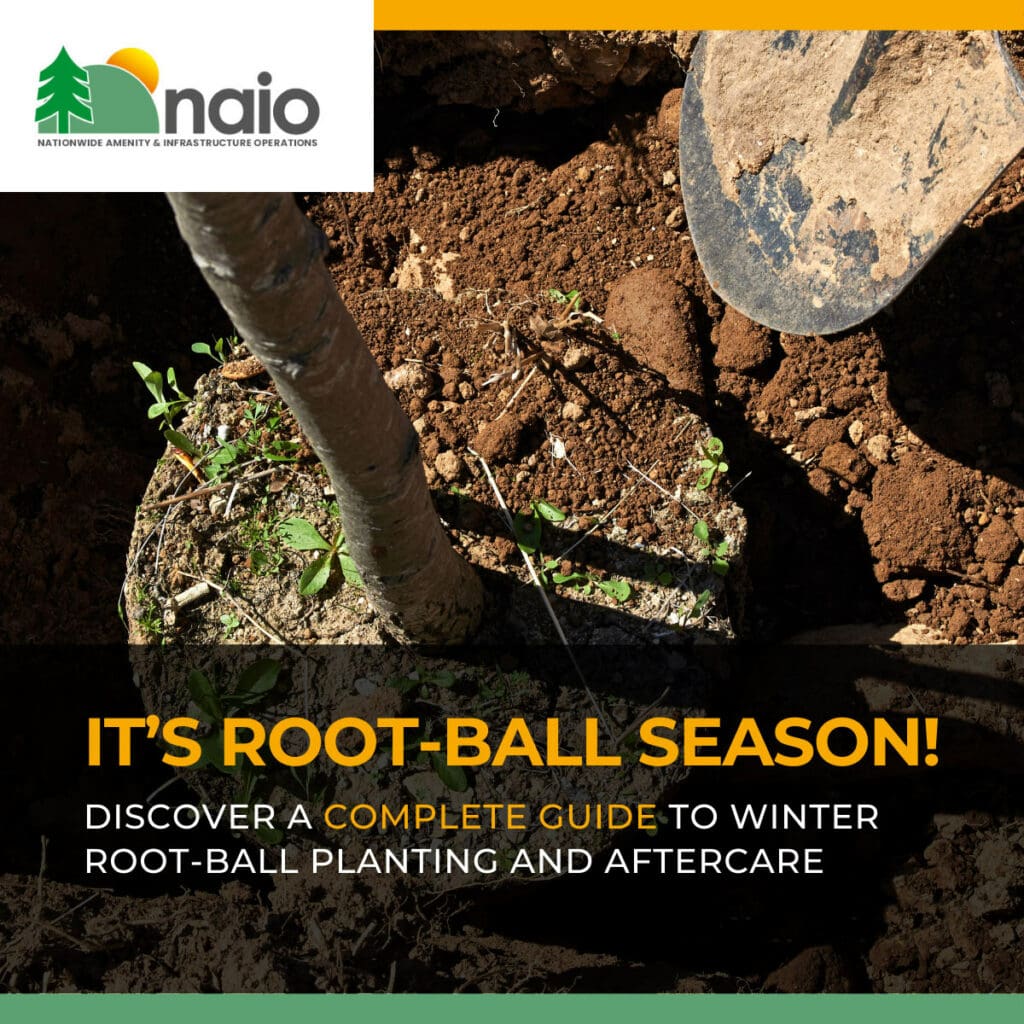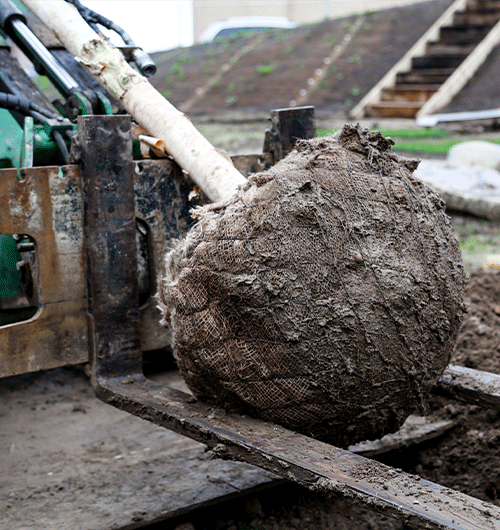

A Guide to Winter Root-ball Tree Planting & Aftercare
While a large portion of winter gardening duties revolves around plant protection, this is also the season when new trees or shrubs should be planted. Planting in cold weather, contrary to popular belief, is less stressful for the plant.
As a result, bare-root trees and root balls are only available in the UK during the autumn and winter months. Plantings are made during their dormancy to ensure that young trees establish roots in their new home. Regardless of the cold weather, the root ball should be watered frequently once it is planted until it is established.
The importance of trees and green space in providing high-quality places to live, work, and play is universally recognised. We believe that landscaping is a vital component in the overall design of new developments and in creating an environment that people can enjoy. Protecting newly planted trees helps them to become established and improves their chances of survival.
Taking care of newly planted trees can:
- improve their growth
- reduce the costs of replacing dead trees
- reduce the costs of future maintenance
- prevent plastic littering from poorly maintained tree protection
As specimen or semi-mature trees are a costly investment, proper selection and planting by specialists such as ourselves are vital for optimal plant establishment.
We consider ourselves to be partners to our customers, our community, and our environment, so let’s take a look at some of the best things you can do in gardens as winter approaches, and how you as a land manager can continue to look after these freshly planted trees to ensure they establish successfully.
The Facts
- Instead of being grown in pots, these bare-root plants are grown in fields.
- They usually establish better than container-grown trees since they were grown in open ground soil as opposed to commercial potting compost.
- Bare-root plants have a higher chance of failure.
- Bare-root plants are typically sold with a ball of soil around their roots, as well as a hessian or wire and hessian wrap.
- These should be planted as soon as possible after delivery, but they can be stored for a limited time if the root balls are kept moist and in a sheltered location.
- Plant at the original soil level of the specimen, as planting too deeply might cause the plant to die. The top of the root-top ball should be at least 5cm above the surrounding soil. When planting, leave the wire and hessian in place, but cut the wire around the trunk and bend it back slightly. Both wire and hessian will deteriorate naturally over time.
Aftercare
As the establishing phase of specimen trees is typically three years or more than that of lesser trees, aftercare is critical.
- Watering: Drought stress is common in freshly planted trees (especially those with a big root-ball) during the first three years. Water shortages are more prevalent in dry, windy weather, so proper irrigation is critical. Watering aids such as irrigation tubes or watering bags can help with the watering of freshly planted trees.
- Weeding: Keep a vegetation-free circle at least 1.2m in diameter around the tree to avoid weeds, grass, and other plants competing for water.
- Mulch: In late winter, after feeding, add a layer of mulch around the tree to help preserve moisture and prevent weeds. Make careful to leave a 10cm radius around the tree’s stem to avoid the mulch from rotting the bark.
- Windbreaks: Young trees in exposed areas benefit from a temporary windbreak for two or three years as they establish. On the windward side, use fabric netting fastened to stakes pushed firmly into the ground.
- Tree guards: In some areas, young trees need to be protected against damage caused by rabbits or other animals. Place a tree guard around the tree trunk or surround it with a barrier of wire netting tied to posts.
